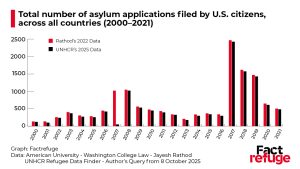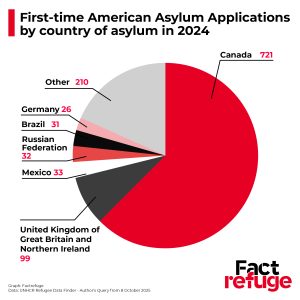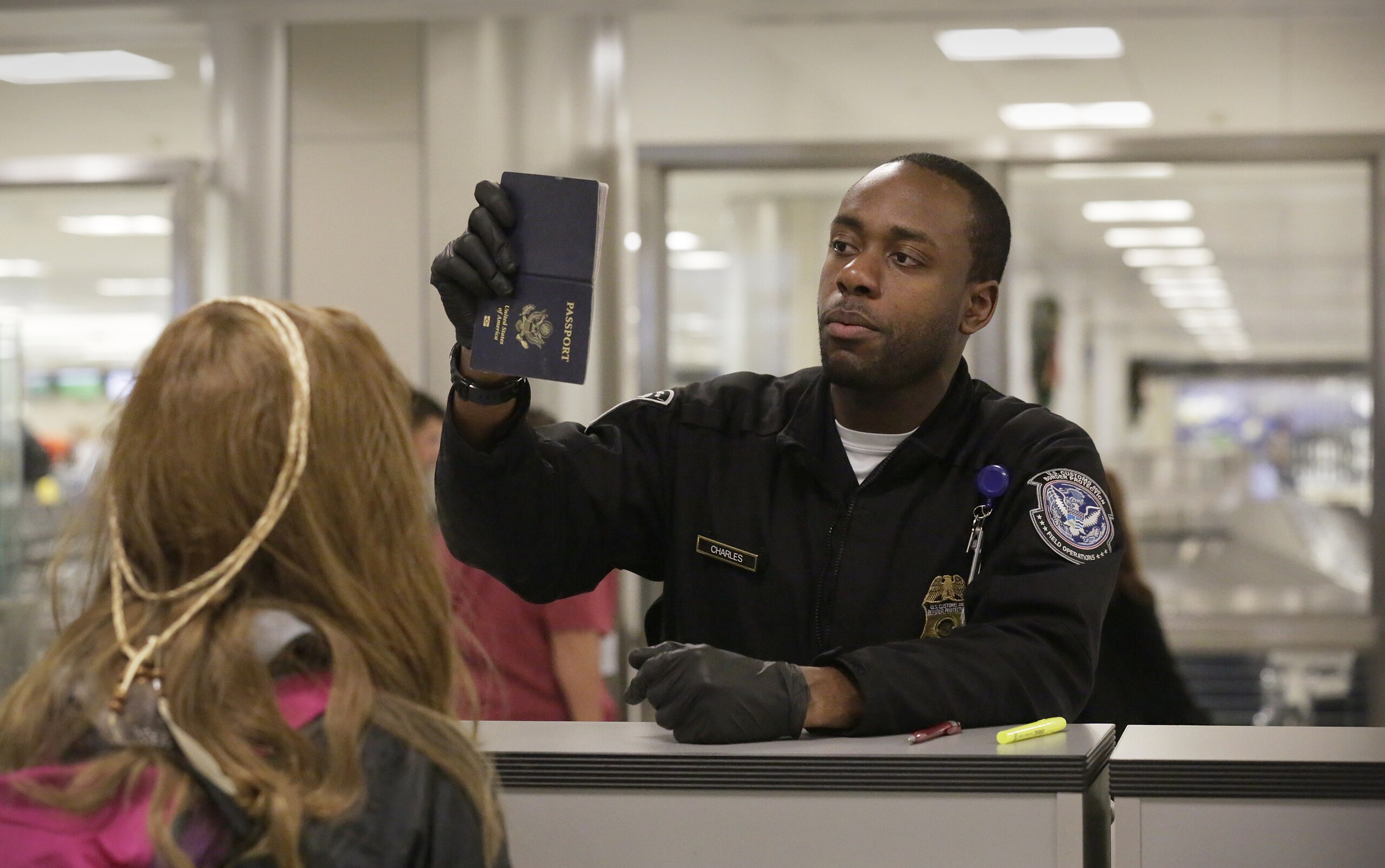Asylum seekers are generally thought to be arriving from war-torn states, but they can come from all states, even developed ones like the USA. So where do American asylum seekers go, and what are they fleeing from?
American Citizens as Asylum Seekers
Jayesh Rathod, a Professor of Law and Director of the Immigrant Justice Clinic at American University Washington College of Law, received “a partially unredacted dataset” with precise information from the UNHCR for his study on American refugees across the globe.
Based on this info, he was able to determine that between 2000 and 2021, an overall 13,857 asylum claims were made in 91 different countries.
According to Rathod, reasons behind applications vary. Many fled in the 2000s to avoid (re)deployment to Iraq, like Brandon Hughey, who joined the military to fund his college education but was forced to flee to Canada to avoid being deployed. Kimberla Rivera was the first female service member from the US to flee to Canada from redeployment after she witnessed what she described as seeing US soldiers use “violence and intimidation against innocent civilians” during her first tour.
Another widespread reason is political persecution: publicly defying the US government as a whistleblower or dissident has forced Americans to flee their state as fugitives. Examples include Edward Snowden, an NSA intelligence contractor who leaked sensitive documents and fled to Russia, where he received citizenship in 2022 after years of asylum. Snowden’s case highlighted the difficulty of finding a state to accept American refugee applications since many countries fear the US could retaliate.
More recently, Evan Neumann, who took part in the January 6 attack on the Capitol in 2021, was accused of multiple assaults on police officers and was ultimately indicted on 14 criminal counts. He took refuge in Belarus, which does not have an extradition treaty with the US.
There are also domestic abuse survivors fleeing the US after authorities failed to protect them from their abusive partners: Holly Ann Collins suffered beatings and rape for five years in her marriage, which continued after their divorce during his visits to their children. When courts gave custody rights back to her husband, she fled to the Netherlands with her children.
Rathod also highlighted the tendency of families to file asylum claims: this would include minor American citizens born to immigrant parents filing asylum claims to flee their parents’ deportations. In these cases, the single claim can mean the application of the whole family.
Recent Spikes in Asylum Claims
The numbers surged significantly in 2017 when the first Trump administration came into power, whether looking at Rathod’s 2022 dataset or the current UNHCR data. Numbers dwindled later but started to rise slowly again coming up to 2025, when many expect a new record could emerge.

The tendency continues into 2025 with a new Trump administration.
In the first two months of 2025, Ireland reported a 60% increase in US applicants for Irish passports compared to the same months the previous year, which was the highest number in a decade. 51 US citizens applied for asylum in the first half of 2025, more than in 2023 (13) and 2024 (22) combined.
The UK also reported a record high of citizenship applications from US citizens, along with France, where a sharp rise in long-term stay applications could be observed in the first three months of the year.
Australia saw an increase as well; at least 29 Americans applied for humanitarian protection visas in the first six months of 2025, according to Department of Home Affairs figures. The data also shows the numbers are steadily increasing across the six months. Specific reasons are not included, but Australian laws require refugees to have a “well-founded fear of persecution” due to their race, religion, nationality, membership of a particular social group, or political opinion.
While figures in general are small, especially compared to US population numbers, the rising numbers show that people are considering leaving in 2025 as well, with or without seeking asylum. Based on news reports and interviews, many are motivated by persecution for their sexuality, being transgender or non-binary, having immigrants in their family, or being targeted by Trump’s policies against academics and government workers.
There are also emigrants who leave because they believe they are witnessing a general decline, in which Trump is only a symptom.
Canada as a Major Destination
Rathod reported that most asylum claims (about 75%) of the asylum claims between 2000 and 2021 were filed in Canada, with significant numbers in the UK, Mexico, Sweden, and Australia. Of the 91 states, 75 received less than fifty applications.
The UNHCR’s Refugee Data Finder lists Canada at the number one place for 2024 as well, with the UK, Mexico, and Russia close behind.
The Immigration and Refugee Board of Canada also corroborates the upward tendency in Americans fleeing Trump’s USA: more US citizens applied for asylum in Canada until the end of June 2025 (245) than in all of 2024 (204). According to their data for previous years, there has been a slow but steady upward tendency since 2021.
There was a clear jump between 2016 and 2017, from 129 to 869, contributing to the theory that current tendencies are connected to the Trump administrations. The UNHCR recorded even higher numbers of 128 for 2016 and 2,097 for 2017, making it the highest number they ever recorded for US citizens’ asylum applications in Canada.
As policies under Trump target minorities and focus on foreigners, numbers are small in comparison to Canada’s overall asylum applications (55,000 in 2025 so far). Despite this, it is not specified why these Americans sought asylum, nor why they chose Canada.
Canada’s acceptance rate of US refugees has always been low. The country insists on the thorough examination of what applicants call persecution and whether they truly cannot find safety in any part of the US.
Whether Trump or a generally worsening political climate is to blame, the ‘land of the free’ appears to be making its own citizens feel persecuted, prompting rising numbers to leave in any viable path. As his presidency and crackdowns continue, numbers could get even higher.

